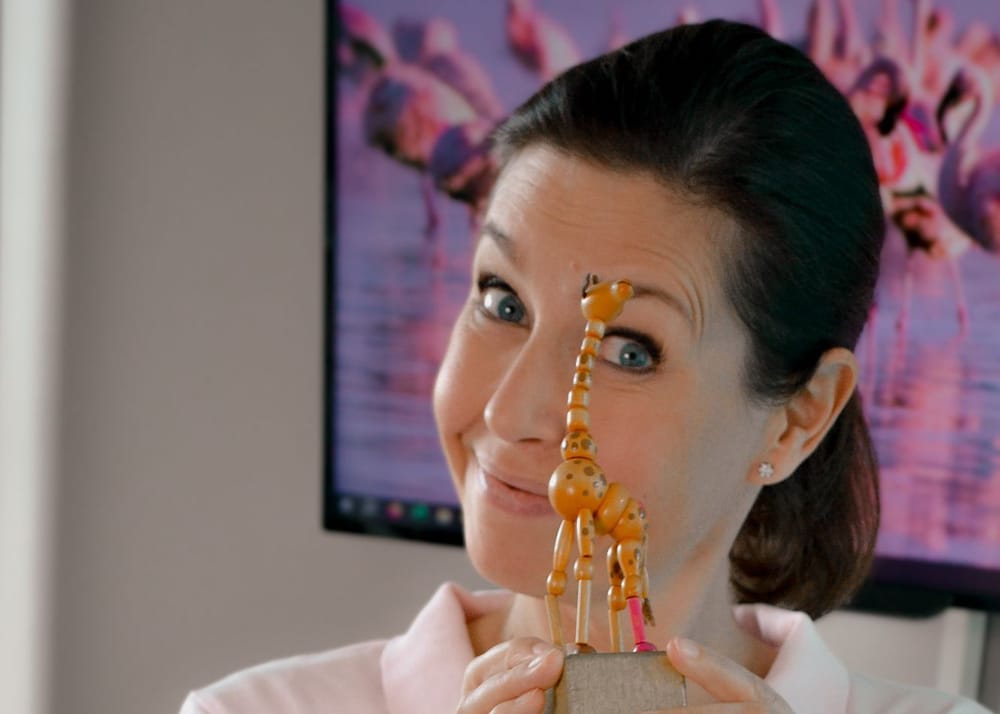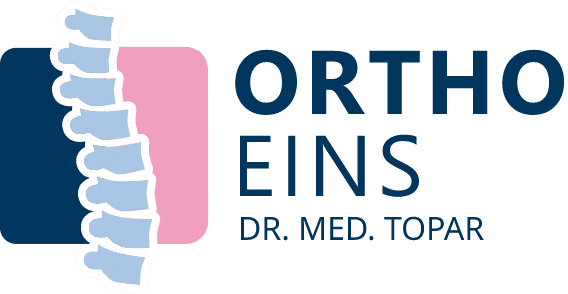Pediatric orthopedics
Focus of the practice
Pediatric orthopedic or pediatric osteopathic treatments in Berlin
A visit to a specialist in pediatric orthopedics is particularly recommended for the treatment of young patients: without the right pediatric orthopedic or pediatric osteopathic treatment, physical deformities or diseases can mean a lifetime of pain and physical limitations. This applies, for example, to scoliosis, a curvature of the spine in children that can lead to severe postural problems.
PEDIATRIC ORTHOPEDICS, ADOLESCENT ORTHOPEDICS & BABY ORTHOPEDICS IN ZEHLENDORF
Pediatric orthopedics is an important special field of orthopedics: pediatric orthopedists in and around Berlin recognize and treat congenital or acquired deformities – not only in children, but also in adolescents (adolescent orthopedics) and infants/babies (baby orthopedics). The specialization here is on malpositions, i.e. postural defects, but also fractures.

ORTHOPEDICS FOR CHILDREN INFANTS
At our private orthopaedic practice in Berlin Zehlendorf, we specialize in sports medicine and back care, as well as paediatric orthopaedics and baby orthopaedics. Whether infant, toddler or teenager – pediatric orthopaedic specialist Susanne Leidig is an experienced orthopaedist and trauma doctor who helps children of all ages and uses her therapies to ensure that your newborn, baby or toddler can be a pain-free child again.
Thanks to her many years of experience in pediatric orthopaedics/traumatology at the Emil von Behring Clinic in Zehlendorf, Susanne Leidig has extensive expertise in appropriately assessing the growth of your infant, baby, toddler or child in all its phases, recognizing abnormal developments and treating orthopaedic diseases of the joints, bones and muscles professionally. When diagnosing and treating children, good pediatric orthopaedic surgeons take a sensitive and highly individualized approach to the growth stage, child pathology and the physical and neurological development of children and carefully explain the necessary procedure to parents.
PEDIATRIC ORTHOPEDIC DISEASES
Many orthopaedic disorders and clinical pictures that can develop into permanent damage in adulthood can be corrected relatively easily in childhood and adolescence. In newborns and babies in particular, pediatric orthopedists can use ultrasound examinations of the hip joint (hip screening) to detect hip dysplasia at an early stage and treat it effectively. The primary task of pediatric orthopaedics at Berlin ORTHO EINS is to prevent malpositions or diseases of the young musculoskeletal system or spine or to detect them in good time and treat them optimally. As a specialist in pediatric orthopedics in Berlin, Susanne Leidig treats problems of the joints, bones, ligaments, muscles or tendons, injuries in children, bone fractures and sprains, training and sports accidents, as well as all typical pediatric orthopedic diseases of the pediatric population in her private practice in Zehlendorf….
- Hip
Childhood hip diseases, hip dysplasia/hip joint dysplasia and hip dislocation (especially infant hips), hip snapping, Perthes’ disease, growth plate separation/hip head slippage (epiphysisolysis capitis femoris)
- Lower extremities, legs feet
Foot malpositions, foot deformities, leg shortening/balance, clubfoot, fallen arches, flat feet, sickle foot, knock knees or bow legs (axial deformities, knock knees, bow legs), internally rotated gait pattern, growing pains (e.g. knee pain and heel pain)
- Spine
Childhood spinal disorders, left-convex or right-convex scoliosis (curvature of the spine), postural defects, hollow back, postural insufficiency, postural weakness, postural disorders, torticollis/infant torticollis (KISS), spondylolisthesis, back pain and other back problems in children
The comprehensive diagnosis of a possible orthopaedic disorder in our paediatric orthopaedics department in Berlin Zehlendorf always begins with a detailed medical history and a physical examination of the child and is supplemented by the use of various imaging procedures. In our pediatric orthopaedic practice in Berlin-Dahlem, we use a variety of modern diagnostic procedures such as sonography (e.g. ultrasound examination of the newborn hip), X-rays (including whole-leg images for axial misalignments, knock-knees or bowlegs and whole-spine images for scoliosis) and MRI for many other issues.
PEDIATRIC OSTEOPATHY FOR BABIES, INFANTS CHILDREN
In the treatment of all pediatric orthopaedic conditions, our aim at our pediatric orthopaedics clinic in Zehlendorf is to avoid surgery wherever possible and to treat pain and conditions with conservative or manual therapies, prostheses and orthoses. This is because orthopaedic complaints in young, growing children or babies can often be treated manually, for example using paediatric osteopathic methods. That is why pediatric osteopathy is also an important part of our pediatric orthopaedics in the pediatric orthopaedic specialist practice in Berlin Zehlendorf (Dahlem). Like all other pediatric orthopaedic treatments in our private practice, osteopathy for babies in Berlin is not only open to private patients, but also to all self-paying patients. Pediatric orthopedist Susanne Leidig will be happy to advise you on the individual treatment options and suitable forms of therapy for your child, baby and newborn.
Frequently asked questions
What is pediatric orthopaedics?
Pediatric orthopaedics is a specialty within orthopaedics that specializes in children and adolescents (0 to 18 years). Pediatric orthopedists treat congenital and acquired deformities, poor posture and other disorders of the musculoskeletal system in children. Taking into account the individual growth stage of the child, the pediatric orthopaedist can detect abnormal developments at an early stage and treat orthopaedic diseases of the joints, bones and muscles professionally.
At what age can my child see a pediatric orthopedist?
There is no age limit for a visit to the pediatric orthopedist. The treatment methods in pediatric orthopaedics can be used effectively for adolescents (adolescent orthopaedics), small children as well as infants and babies (baby orthopaedics).
When is a visit to the pediatric orthopedist advisable?
If your child frequently complains of pain in the legs, feet, hips or back or you notice noticeable swelling of the joints, you should have these complaints checked out by a pediatric orthopedist. Children with congenital deformities or malpositions should receive pediatric orthopaedic treatment from the outset or as early as possible to prevent permanent damage. You should also consult a pediatric orthopedist if abnormalities are found in your child’s skeleton during a pediatric examination.
What conditions can a pediatric orthopaedist treat?
Typical clinical pictures that can be treated by a pediatric orthopedist include pediatric orthopedic disorders of the hip (e.g. hip joint dysplasia, hip dislocation, slipped hip head), the lower extremities (e.g. foot malpositions, foot deformities, pelvic obliquity, leg malpositions, growing pains) and the spine (e.g. spinal curvature/scoliosity, hollow back, back pain). However, fractures and sprains as well as injuries from training and sports accidents can also be treated orthopaedically in children.
How does pediatric orthopaedics differ from adult orthopaedics?
The orthopaedic clinical pictures of children and adults differ greatly in many respects. In contrast to adults, children are still growing. On the one hand, this means that the bone substance of children is comparatively soft and that the child’s musculoskeletal system does not yet show any signs of wear. Secondly, the hormone balance of children and adults is fundamentally different. The body only begins to produce larger quantities of growth and sex hormones with the onset of puberty. As these hormones are needed to build muscle mass, among other things, children are generally considered to have weak connective tissue and muscles before the onset of puberty. This childhood muscle weakness is responsible for a variety of orthopedic conditions that should be treated by a specialized pediatric orthopedist.
How does a pediatric orthopaedic examination work?
Every treatment at ORTHO EINS begins with a comprehensive diagnosis and anamnesis. The second step is a detailed physical examination of the child. Various imaging procedures such as ultrasound, X-ray or MRI can be used. This is followed by an in-depth consultation on further treatment options. Pediatric orthopaedics relies primarily on conservative, manual and pediatric orthopaedic methods, avoiding surgical interventions wherever possible.
Are regular check-ups with a pediatric orthopedist advisable?
Regular screening is of fundamental importance in order to be able to recognize possible malformations at an early stage and treat them effectively. Many congenital or acquired pediatric orthopaedic conditions can be treated quite easily in early infancy or childhood. However, the harder the child’s bones become, the more difficult and possibly more painful orthopaedic therapy becomes. In the worst case, malformations that are detected too late can lead to permanent damage in adulthood.


